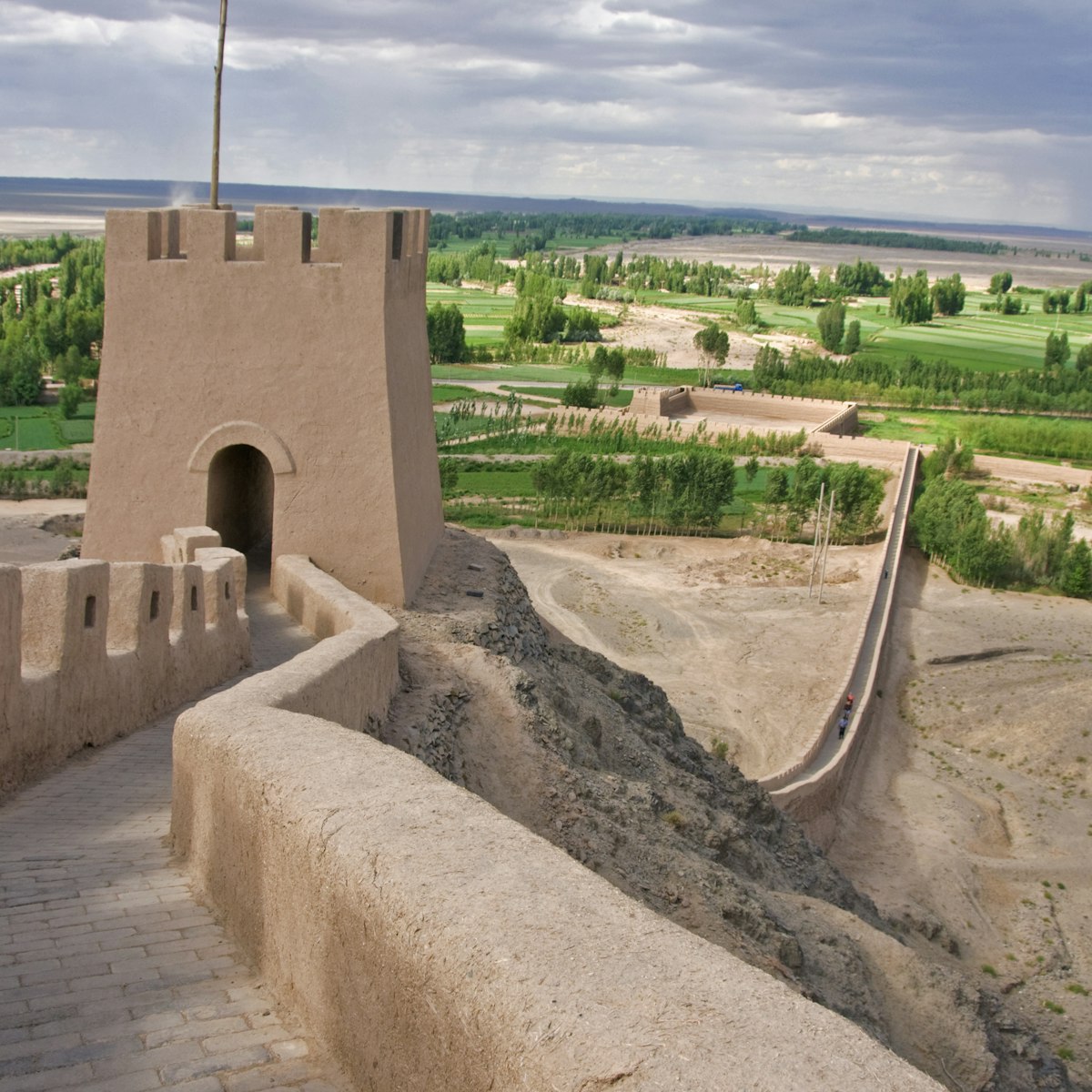At this busy market load up on lamb kebabs, ròujiāmó (肉夹馍, pork sandwiches), shāguō (claypot) dishes, barbecue, Sichuan cuisine, beef noodles, roast duck, dumplings and more. There's a whole batch of small restaurants on the north side of the market that offer sit-down meals.
Jingtie Market
Gansu
Lonely Planet's must-see attractions

3.21 MILES
One of the classic images of western China, this huge fort once guarded the narrow pass between the snowcapped Qilian Shan peaks and the Hei Shan (Black…

6.36 MILES
Running north from Jiayuguan Fort, this section of the Great Wall is believed to have been first constructed in 1539, though it was reconstructed in 1987…

Jiayuguan Museum of the Great Wall
3.09 MILES
Located inside Jiayuguan Fort, this excellent and highly informative museum contains photos, artefacts, maps, Silk Road exhibits and models to show just…

First Beacon Platform of the Great Wall
5.32 MILES
Atop a 56m-high cliff overlooking the Taolai River south of Jiayuguan, a large, crumbling and wind-eroded chunk of packed earth is all that remains of…

9.02 MILES
These tombs date from approximately AD 220–420 (the Wei and Western Jin periods) and contain extraordinarily fresh brick-wall paintings (some sadly…
Nearby Gansu attractions
1. Jiayuguan Museum of the Great Wall
3.09 MILES
Located inside Jiayuguan Fort, this excellent and highly informative museum contains photos, artefacts, maps, Silk Road exhibits and models to show just…
3.21 MILES
One of the classic images of western China, this huge fort once guarded the narrow pass between the snowcapped Qilian Shan peaks and the Hei Shan (Black…
3. First Beacon Platform of the Great Wall
5.32 MILES
Atop a 56m-high cliff overlooking the Taolai River south of Jiayuguan, a large, crumbling and wind-eroded chunk of packed earth is all that remains of…
6.36 MILES
Running north from Jiayuguan Fort, this section of the Great Wall is believed to have been first constructed in 1539, though it was reconstructed in 1987…
9.02 MILES
These tombs date from approximately AD 220–420 (the Wei and Western Jin periods) and contain extraordinarily fresh brick-wall paintings (some sadly…


